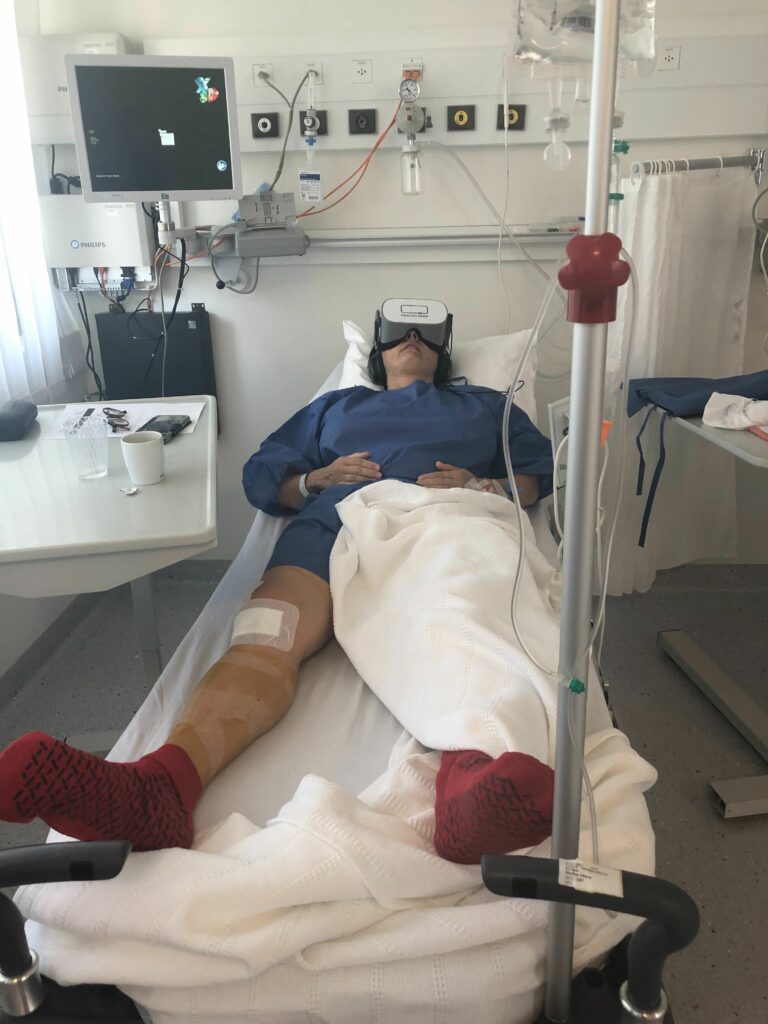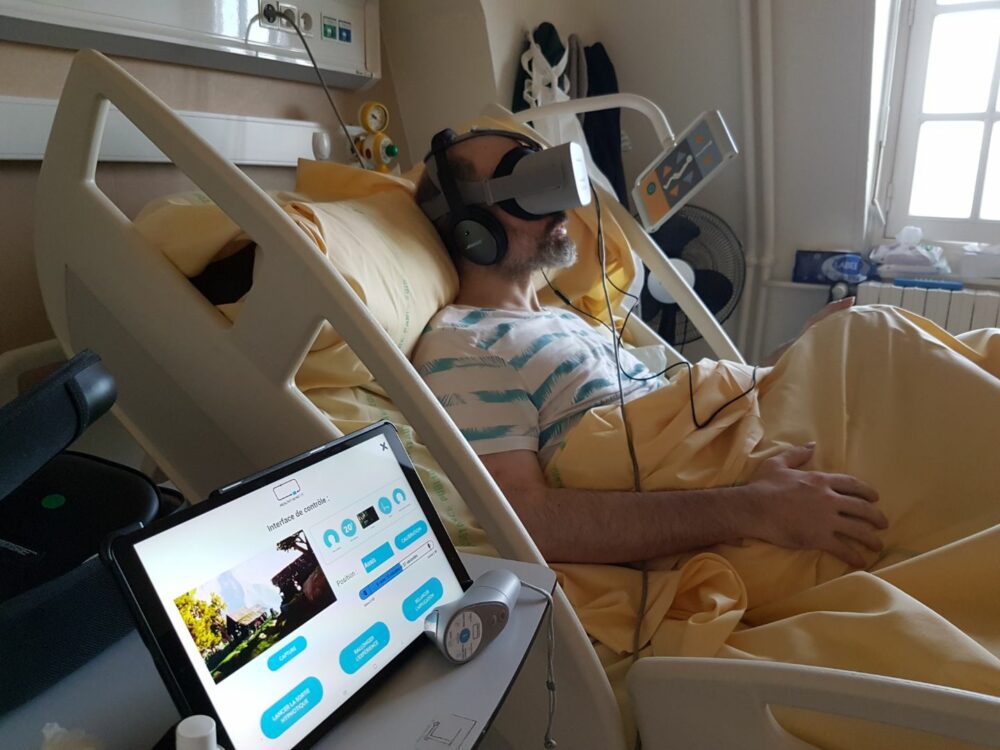Today, virtual reality goes beyond video games to the medical sphere… That is enormously advantageous for hospitalized patients. Effective to relax or anesthetize, virtual reality is also able to care. Today, it is used to treat phobias, addictions, and other anxiety or behavioral disorders. Placed in a therapeutic aim, should we talk about therapeutic virtual reality, or virtual reality therapy? On which therapy is virtual reality based to be effective? Let’s come back to the concept of therapeutic virtual reality in the three following key points!
Medical hypnosis as therapy
Understanding the concept of therapy
We hear about “therapy” everywhere and every day… But what does it really mean? “Therapy” means treatment, and the procedures to be applied in this treatment. Therefores, therapy is a curative method, a means to prevent a disease.
There are different types of therapies, for different goals. For examples:
- Medical therapies: chemotherapy, antibiotic therapy, radiotherapy, hormone therapy.
- Paramedical therapies: physiotherapy, occupational therapy.
- Psychological therapies: psychotherapy, analytical therapy (psychoanalysis).
- Group therapies: couple therapy, family therapy.
- Unconventional alternative medicine, assimilated to therapies: light therapy, art therapy, lithotherapy, aromatherapy, hypnotherapy…
The effectiveness of hypnotherapy by virtual reality
So, “hypnotherapy” is hypnosis with therapeutic purposes. More and more used in hospitals, hypnotherapy is often combined with virtual reality… But this is not by accident. Virtual reality and hypnosis have a main point on commonality: the modified state of consciousness. In other words, a different mental state from the usual state of consciousness.
Indeed, the hypnotic state restricts the consciousness to a few pieces of information. On the other hand, virtual reality put the user in an artificial and digital 3D world, so in a restricted state of consciousness with the real external environment.
Thanks to virtual reality, medical hypnosis cares for some patients from their addictive and anxiety disorders. Why is it so effective? Because of the double process of consciousness modification. Put in a 3D environment through virtual reality, the patient is just after put in a hypnotic state thanks to hypnotherapy. This virtual hypnotherapy allows patients to lose weight, stop smoking, reduce their stress… Or even being anesthetized before surgery.

Headsets and virtual reality software as therapeutic tools
Virtual reality headsets: an adapted medical device
But in practice, how can patients experience hypnosis thanks to virtual reality? The virtual reality headset is certainly the most practical and comfortable solution for the patient. Indeed, virtual reality softwares offers an immersion in 3D environments, through Oculus type helmets. The patient can experience a virtual experience in the hospital, in the operating room or in the waiting room… While he is sitting or lying down, on his stomach or on his back.
An easier immersive experience with high quality graphics… It makes the 3D environments more realistic. Enriched with virtual images and sound (music, therapist’s voice), virtual immersions stimulate both the patient’s view and hearing. This double sensory stimulation encourages the patient’s altered state of consciousness.
Virtual reality to heal or relax
To keep a therapeutic aim, virtual reality software is based on hypnotic principles. That is the reason why it is developed with experts in neuroscience doctors, sophrologists or hypnotherapists. The content of the software is different according to the goal of the virtual hypnotherapy :
- To reduce or treat a behavioral disorder, by acting on the mental state of the patient, (anxiety, addiction, depression, phobia, post-traumatic stress…).
- To relax and reduce pain, mainly by acting on the patient’s physical feelings during surgery or any other anxiety-producing and/or anxiety-producing procedure.
©Healthy Mind

The difference between virtual therapy and therapeutic virtual reality
Healing with virtual therapy
When virtual reality aims to treat the patient from a psychic point of view, it is a virtual therapy, or Virtual Reality Therapy (VRT). This kind of therapy is classified among the recognized behavioural and cognitive therapies (CBT). Its goal? To slowly head the patient to the origin of his behavioural problem. For example, a patient having flying phobia will be virtually put in an airplane to treat this fear or trauma.
Therefore, virtual immersion over real immersion has many advantages:
- it is less rude;
- a personalized hypnosis, adapted to the patient’s case (phobias, addictions, repeated insomnia, chronic anxiety attacks, schizophrenia…);
- easier to reproduce the situation at the origin of the obsessive compulsive disorder, or other psychological disorder;
- a non-medicinal therapeutic tool;
- it saves time and money;
- useful, whatever the patient’s capacity for immersion: indeed, the virtual immersive experience is useful as a training (before a confrontation with a real situation).
Relax and anesthetize with therapeutic virtual reality
When virtual reality aims to relax or anesthetize the patient, it is more a therapeutic virtual reality than a virtual therapy. The goal of therapeutic virtual reality? To put the patient in soothing and entertaining 3D environments, in order to divert his attention from pain and stress. The patient can actually feel these sensations before, during, or after an anxiogenic or painful procedure. For example, our Healthy Mind virtual reality helmets are made to respect this therapeutic virtual reality.
Thus, our Healthy Mind virtual helmets are based on hypnotic principles: sophrologist voice, relaxing music… A visual and auditory experience for the patient. The latest can even choose its environment. In this way, Healthy Mind therapeutic hypnosis is a personalized immersive experience.
Virtual realtity as an alternative and complement to anesthesia
Moreover, hypnosis as an alternative and complement to local and general anesthesia is practiced in more and more hospitals. When it is associated with drug sedation and/or local anesthesia, it is called “hypnosedation” or “hypnoanalgesia”. The advantages of virtual anesthesia are the followings:
- the medical team does not need to be trained in hypnosis (anesthesiologists, surgeons, nurses) ;
- hypnosis, virtual or not, can be as effective as a conventional anesthesia;
- a better patient’s recovery, and reduces postoperative problems (nausea, vomiting…);
- it makes the patient active in the hospitalization process;
- a reduction in drug treatment (analgesics and anxiolytics).
Whether it is virtual reality therapy or therapeutic virtual reality, hypnotherapy is both associated with virtual reality. From then on, the patient is thanks to hypnotherapy virtually put in a modified state of consciousness. To summarize: hypnotherapy is the content or the means, and virtual reality is the tool or the support. With Healthy Mind, we have developed therapeutic virtual reality software. Indeed, we do not want to treat psychotic disorders through behavioral therapy. Our goal is rather to relax, reduce pain and anxiety, or even to anesthetize the patient in a hospital environment. With this in mind, our Healthy Mind helmets are already successful for breast surgery, gynecology and pediatrics. Do not hesitate to contact us about our application medical cases!







